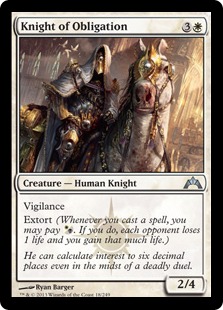How does Star City Games determine preorder prices for Magic sets? This is one of the questions I’ve been asked the most frequently over the years. In today’s article, I’ll give a good overview on how we set the initial prices and quantities for a new set (such as Streets of New Capenna), and how these prices are adjusted leading up to release.
There are currently three types of packs that retailers open for singles during a normal set release: Draft Boosters, Set Boosters, and Collector Boosters. For the sake of ease here, let’s talk about Draft / Set Boosters (since they have virtually identical odds on the normal cards in a set).
Figuring Out Preorder Numbers
Before we can get to pricing cards, we need to figure out how many copies of each card we’re going to open. The last thing we want to do is oversell a card or misprice a card because it’s more or less frequently opened than initially anticipated. Let’s walk through that process!
Let’s say that a Star City Games opens 100 boxes of product to sell singles. There are roughly 36 non-foil rare/mythic cards per Draft/Set booster box, so this opening would represent 3,600 rares/mythics.
An average Magic set these days has 60 rares and 20 mythics. Rares appear at roughly a 2:1 ratio against mythics, so mathematically to get one of each mythic, you’d open 140 packs (60 rares + 60 rares + 20 mythics). The math does not work out perfectly in a short sample size, but given 100+ boxes, it’s a good baseline.
If 140 packs represent one of each mythic and two of each rare, 100 boxes (with 36 packs each) will make roughly (and I’m rounding here) 26 of each mythic and 52 of each rare.
But not so fast in just ending things with that math. There are also variants in each set!
Variant Math
The odds on variants have changed from set to set, but generally if there is one variant available in a Set/Draft Booster, the odds are 2:1 of getting a normal versus a “special” treatment. This is not always the case, but it has been the case for the majority of sets since Throne of Eldraine. If there are three variants available (for example, Vorinclex, Monstrous Raider from Kaldheim had regular, Showcase, and Phyrexian frames), the odds are 4:1:1 of regular versions versus special versions.
Let’s look at Kamigawa: Neon Dynasty to get practical numbers. Every card has a variant. The odds on variants are approximately 7:1 for a regular version versus a special frame version when it comes to Draft/Set Boosters.
There are 59 rares and eighteen mythic rares in Kamigawa: Neon Dynasty. Using that 100-box number from above, we’re opening 3,600 non-foil rares and mythics total. The variants available in Kamigawa: Neon Dynasty booster packs are borderless, soft frame, Ninja frame, and Samurai frame. (Extended art cards are only available in Collector packs.) There are 59 rares with two versions, thirteen mythics with two versions, and five mythics with three versions.
The base number of each card will be eighteen mythics plus 118 rares for a total pool of 136 packs opened to get one of each mythic and two of each rare. 100 boxes represent 3,600 booster packs. This would be (slightly rounding) 26 of each mythic and 52 of each rare.
Further extrapolating those odds, let’s look at 7:1 odds for cards that have one variant, and 14:1:1 for cards that have two variants.
Rares: Approximately 46 of each regular version, approximately six of each variant version.
Mythics (with one variant): Approximately 23 of each regular version, approximately three of each variant version.
Mythics (with two variants): Approximately 23 of each regular version, approximately one-and-a-half of each variant version.
It’s Pricing Time!
We know roughly how much we’re opening of each card. There are other variables (foils, The List cards, basic lands, commons, uncommons), but the majority of the value is going to come from the rares and mythics. Now comes establishing prices!
The following factors, in order of importance, dictate where we’ll start our preorder prices:
- Rarity / scarcity of the card (how many copies we’re expecting to open).
- The effect on the printed card in relation to similar effects printed in the past.
- Number of formats that the card will be playable in (Commander, Modern, Standard, Legacy, Pioneer).
- Buzz around the card from other sources.
Given that we try to have our preorders up within an hour of cards being previewed, we don’t have much time to figure out that fourth bullet point. Thankfully, at Star City Games, we have a lot of people who can weigh in on pricing a card. We have one person who is “in charge” of making the final call on the initial preorder price for any individual set, but they often solicit the input of other employees in the company before pushing a price live.
When we put up our initial quantities with prices, we don’t list all copies of the card we’re going to presell at once. If the math says we’re going to have 24 copies of a card available, we might list eight copies at our initial price. If they sell immediately to one person, we might either list another eight at the same price (if we feel the price is still correct) or we might raise the price (either slightly or a lot) if we misread the initial market.
Putting It All Together
In conclusion, the way that we’re determining our preorder prices and quantities is a combination of the following:
- Knowing how much we’re going to open versus what we are spending on product plus labor to open it.
- Having a knowledge of other cards that exist with similar abilities, and what their price history has been.
- Reacting to how the public reacts to our initial pricing.
We’re not always going to get things right initially, because cards revealed later in the preview season may positively or negatively affect the value of cards previously revealed. There’s also an entire science into trying to figure out how newer cards affect cards from older sets – but that’s another article for another time!





